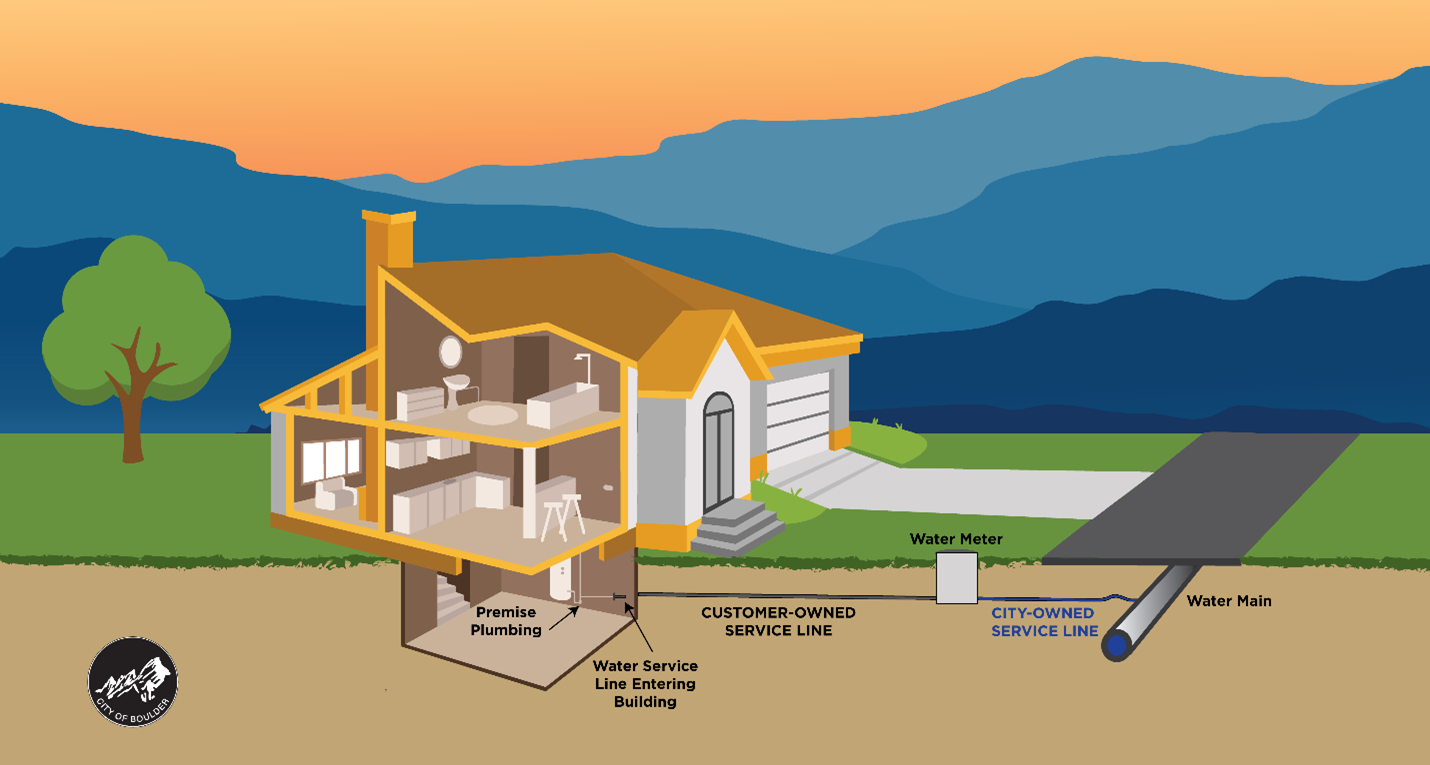The city has completed its baseline inventory of all drinking water service lines in its service area. No lead lines were found. The inventory began in 2023 with the goal of ensuring that no City of Boulder water customers have lead water service lines. A map of the inventory is available to view in both English and Spanish. The city continues to update this map with updated information when available.
Committed to our Community’s Health
The City of Boulder strives to provide clean, safe, great-tasting drinking water to our customers.
Map Information
The city used several methods to complete the initial inventory, including records review, customer outreach, onsite visits to homes and businesses and visual inspections. Although not every service line in the city was inspected, the city inspected a statistically valid number of lines, using an approach approved by the Colorado Department of Public Health and Environment.
This statistical approach provides us with the confidence to label all service lines as non-lead. The category description in the map defines what method was used to determine the material of the service line. If you have questions about your water service line material email drinkingwater@bouldercolorado.gov. If you would like to verify the material of your water service line you may enter your service line material information at bldr.fyi/mywaterserviceline. The map will be updated as we receive new information.
Community members who live in manufactured home communities can learn more about their service lines on the city's Water Utilities webpage.
Boulder Monitors for Lead in Drinking Water
Water leaving Boulder’s two water treatment plants is essentially free of lead. Lead in drinking water can occur if in-home plumbing materials that contain lead corrode over time. The city's water treatment process is designed to reduce corrosion and protect pipe materials.
The city consistently provides high-quality drinking water that meets water regulations, and our water sampling program goes above and beyond requirements, including those that limit the amount of lead in drinking water.
Sample lead results in the city are consistently lower than federal standards. Because of this, the city is on reduced monitoring for lead, which means lead and copper samples need to be collected once every three years, rather than twice per year. The most recent samples were collected in 2024 and a result summary is listed in the 2024 Drinking Water Quality Data section. The city will collect samples again in the summer of 2027.
Regulations
The city completed this inventory in response to federal government enacting regulations to mitigate exposure to lead from water service lines. A service line is the pipe that moves water from the city’s water system into homes and businesses. The city owns the water service line from the water main (typically under the street) to the meter, and the customer owns the water service line from the water meter into the home or building.

View larger image: Water Service Line Public Private Locations (opens in a new window).
To complete this inventory, the city followed state guidance, reviewed thousands of historical records and conducted visual inspections to classify service lines as non-lead. Community participation was a large part of the inventory process, as more than 1,200 community members identified the material of their service lines inside their properties and shared that information with the city.
Submit Your Findings
The city continues to update their inventory when more information comes available from customers or utility work. You can submit your property to the city’s water service line inventory by taking five minutes to complete the following form accessed through the link below:
How To Check Your Water Service Line
Locate Your Water Service Line
Locate where the drinking water service line comes into your house or building near the main water shut-off valve. These lines typically enter the home through the floor or wall of a crawlspace or basement. Make sure the line you inspect is not the one used for gas or wastewater, and is not part of the piping used to move water through your home or business.
Do not attempt to access the water meter. City staff are responsible for understanding the material of the service line from the meter to the water main and will conduct physical inspections if necessary.

City of Arvada
Water service line entering through foundation wall
Identify Your Drinking Water Service Line Material
Identify what material your water service line is made of. Be sure to look at the water service line itself and not the connection, glue, or solder.
- Lead: A dull, silver-gray color that is easily scratched with a coin. Use a magnet - strong magnets will not cling to lead pipes.
- Galvanized: A dull, silver-gray color. Use a magnet - strong magnets will typically cling to galvanized pipes.
- Copper: The color of a copper penny.
- Plastic: White, rigid pipe that is joined to water supply piping with a clamp.

Environmental Protection Agency
Submit Your Findings
Add your property to the city’s water service line inventory by taking five minutes to complete the following form accessed through the link below:
Questions or comments?
There are several ways to contact city staff:
- Email: drinkingwater@bouldercolorado.gov
- Call: 303-441-3200
More information can be found on the Colorado Department of Public Health and Environment’s lead webpage.